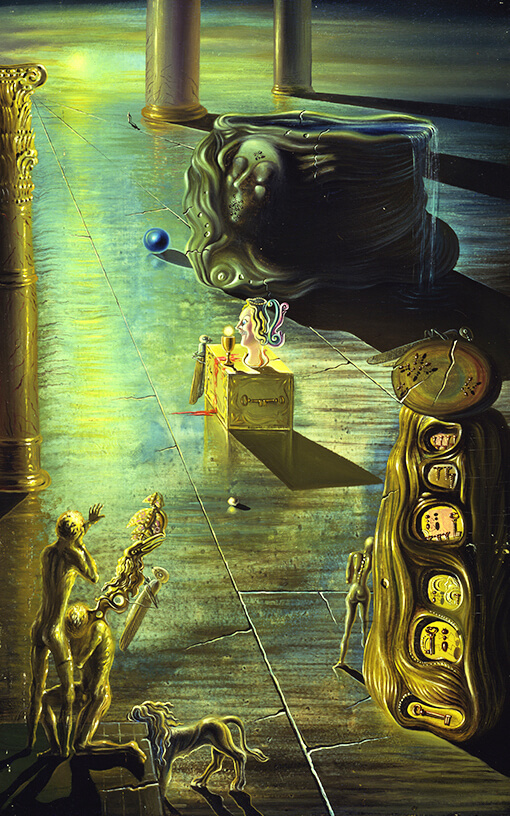The Font, 1930 by Salvador Dali

The theme of abject desire that Dali explores in the Profanation of the Host is tied to a psychoanalytic narrative of guilt and paternal retribution in The Font. The title refers to a large fountain in the background in the shape of a woman's head from which water overflow. The undulating rhythms of the structure reveal Dali's fixation on the "edible beauty" of art nouveau architecture, while the serpentine coils of the figure's hair, in conjunction with her stony, petrified countenance, allude to the myth of Medusa, which Freud interpreted in relation the male child's recognition and disavowal of the mother's absence of a penis and the corresponding threat of his own emasculation. The closed eyes of the figure signify Medusa's blinding stare, while the substitution of a horde of ants for the mouth, which resembles a pubis, simultaneously serves to represent and conceal the object of the child's anxiety.
Immediately below the baptismal font is a chalice and host. A pitcher in the form of a woman's head stands to the side of the cup, on a small bloodstained platform to which a grasshopper and a key are attached. A sign of abject terror, the grasshopper has phallic associations for Dali and, like the fish, is a bisexual creature. The key is in turn a conventional symbol of the Freudian unconscious (note the presence of keys, screws, ants, and a woman's head painted in the curious object on the lower right in conjunction with an image of ideal feminine beauty in the form of a French postage stamp representing Marianne).























